Black Current Catalogue
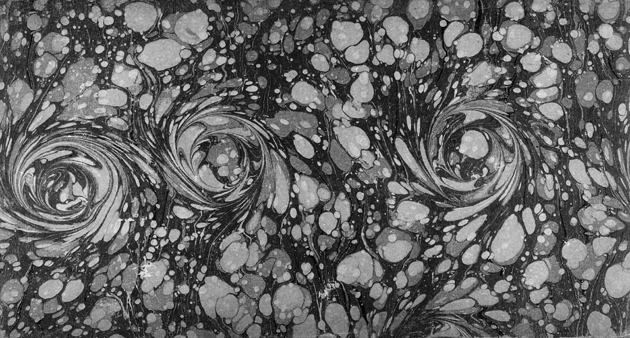
Graphics Blender
Text Etienne Bernard
Writtten for Black Current exhibition publication
Harmen Liemburg is a graphic recycler. His work draws on existing icons which he then remodels, changes and mixes, as he swaps around rankings in a romantic approach of the graphic artist as a compulsive explorer of living matter. An incredibly eclectic cocktail, the ingredients of his graphic materials consist of symptomatic vernacular signs picked up in the course of road trips through America, shopping expeditions through Japanese supermarkets, or trips through the oldest archives of museums and libraries. Harmen Liemburg collects not in the manner of an aesthete seeing each item as an irreplaceable treasure, but rather as an insatiable and aware observer of everything and anything that our world has, and will, produce in the line of images.
For Liemburg, the multi-plural visual culture excavated from the past and the present alike enjoy equal status and represent equal potential. Liemburg believes that an image only exists via the future projections that we impose. A sign, left to its own devices, evaporates and disappears unless it is formally tackled above and beyond its predetermined field of action.
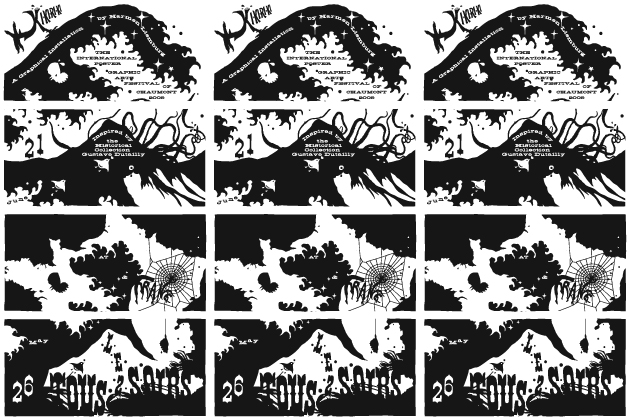
In 2005, this exciting graphic artist suggested going through the Chaumont collection of old posters and printed materials, donated to the town of Chicago by its elected representative Gustave Dutailly in 1906. Working from these “fin de siècle” printed materials, Liemburg succeeded in extracting a graphical essence, re-created within a fuzzy, dreamlike environment during the poster festival in the striking municipal council hall. Featuring Chinese shadows and colour screens, as well as Japanese typographic fonts and funfair fantasy images, the end result was a strange and striking graphic constellation for the utmost pleasure of adults and children alike. And indeed, this composition helped the people of Chaumont consider their local, and somewhat slumbering, 100-year-old poster heritage in a completely new light, and opened doors towards new and unsuspected possibilities.
Given the success of this project, it is only natural that Harmen Liemburg be brought on board to explore and re-explore the archives of the Smith-Lesouëf Library. Standing beside the Bernard Anthonioz Maison d’Art in Nogent-sur-Marne, this imposing edifice, built around 1910, with its majestic mezzanines leading to spreads upon spreads of all types of works can be truly considered a type of human cluedo. Armed with a stepladder and a copier, the Dutch graphic artist set up base right in the middle of dust-laden shelving, and set about compiling images unearthed in a journey through geography atlases, illustrated encyclopaedias and other herb manuals. One particular find included the Magasin Pittoresque magazine, created in 1883 by a certain Edouard Charton, inspired by English magazines of the time. A type of popular encyclopaedia, the magazine focused on a wide range of subjects including history, art, natural sciences, industry, and travel, all themes of potential interest to well-to-do households of the second half of the 19th century.
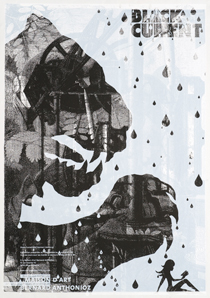
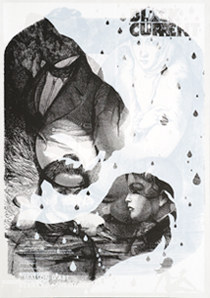
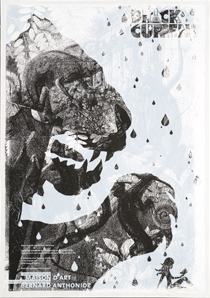
All these visual sources from the industrial era are so much grist to the mill of Harmen Liemburg, who is best considered as a type of postmodern archaeologist. Back in his workshop in Amsterdam, these forms become the starting material for a veritable compilation blending old and new, borrowed and original… here, the canvas of poster about a workshop in Minneapolis is suddenly sat on top of an engraving of an exotic reptile… there, screen printed information from an invitation card act as a background to a pattern found on the back cover of some book of magic. Black Current is an ode to a trans-generational graphism, where images run up against each other, and feed off each other. A multilayered expedition to the country of signs.